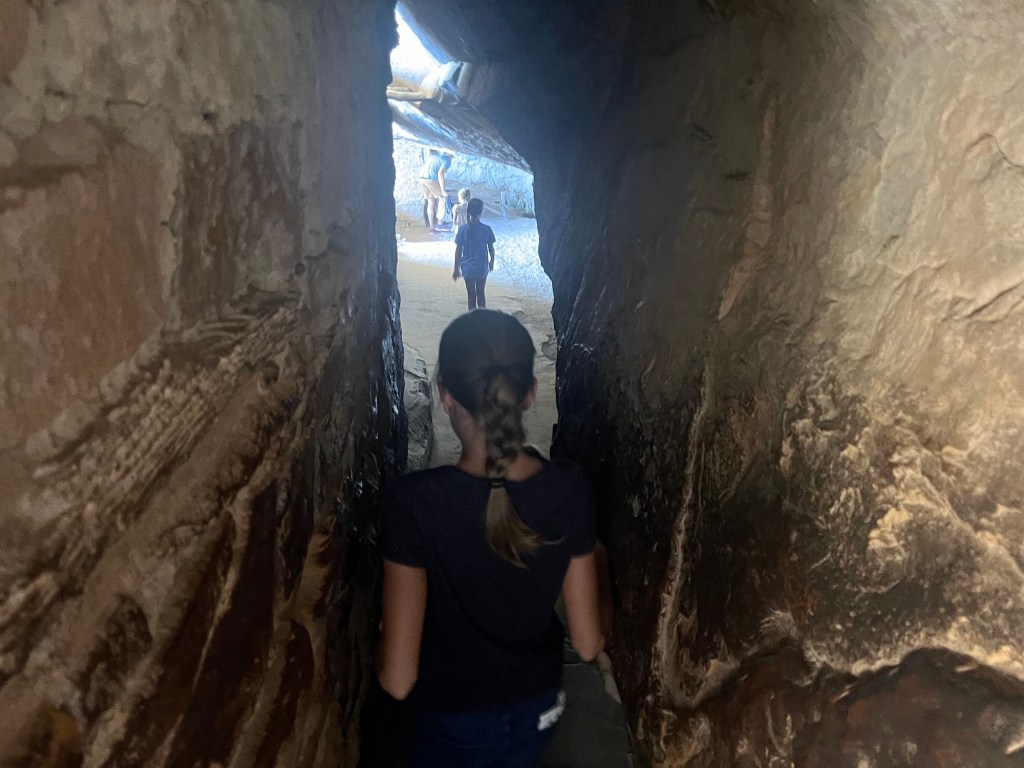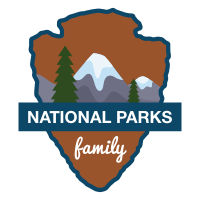The second park on our Colorado tour was Mesa Verde, a “green table” of historic cliff dwellings located in the southwest corner. They’re a classic attraction – every native Coloradan we spoke to remembered coming here on a school field trip. These ancient homes are presumably 700 years old and surprisingly, they still seem pretty sturdy. One could expect a few hundred years from now elementary age children will still be taking field trips to learn about the Pueblo people who carved houses into the rock.
Here’s a national park trivia question: what do Gateway Arch and Mesa Verde have in common? Both are parks dedicated to preserving a man-made edifice, rather than a natural feature. In my opinion, cliff houses and our giant symbol of westward expansion are pretty impressive but nothing can top the beauty and grandeur of God’s creation!
With our reservations for Cliff Palace and Balcony House secured ahead of time, we arrived at Mesa Verde on a sparkling clear morning and ascended into the park to join a few dozen others on a tour of the cliff dwellings. Our first tour, Cliff Palace, was a short stroll along a row of intricately carved little houses that reminded me of a Christmas village (the kind that hold tea lights). We wandered slowly through the row of dwellings with a sense of quiet wonder, peering into windows here and there, thinking about the ancient people who lived here… while also trying to keep five energetic children from touching anything, lest the oils from their hands permanently mar these ancient ruins. This was a small community, we were told, who made these homes and lived here for a time, eventually moving on to a more permanent location. This was a temporary stop in their migratory lifestyle, our guide said. Nevertheless, we shouldn’t think the Ancient Pueblo people are gone. Far from it. They are around us today, living amongst us anywhere and everywhere.









At the end of our Cliff Palace tour, we had a quick snack and drove a little further down Mesa Top Ruins Road to Balcony House. The Balcony House tour advertises 12-inch tunnels and 40-foot ladders, so of course we wanted to try it. The park doesn’t have an age requirement but they say not to bring children unless you’re sure they can make it the whole way. We were pretty sure.

Our new tour guide was a young man with dark hair and a wispy beard who identified himself as being from a local indigenous tribe, a direct descendant of Pueblans. He showed us around his ancestral home with a sense of weariness, perhaps at the oppression his people have endured over the years from us white folk. Balcony House turned out to be smaller than Cliff Palace, nestled into a huge canyon wall. After a steep climb down from the mesa and up through the rocks into Balcony House, we looked around, curious how people actually lived here if they couldn’t fly. A prominent feature of the houses were round holes in the floor, referred to as “kivas” by our guide. He wasn’t forthcoming with more information.
“What are those for?” one man asked.
“Oh, they were used in ceremonial rituals performed by our people.”
“What kind of ceremonies?” someone else questioned.
“Oh, various religious ceremonies.”
“So those round holes were for mysterious religious rituals?”
“Yes.”
At the end of our tour Sophia had a question. “Where are the bathrooms?” she asked. Our guide smiled patiently. They would go down into the canyon, he answered. We stared down into the canyon a thousand feet below us. “Even the children?” someone inquired. Yes. As a mother of several small children I immediately had more questions. At night? In the cold? Alone? What about wild animals? That doesn’t really make sense, I told Greg. More likely there was system of chamber pots or something. Maybe they just haven’t excavated all the evidence yet.
Our guide ended the tour by assuring us that this was no temporary dwelling place for his family; rather, this was their final destination. I think a conversation with Guide #1 would be helpful, just to get the story straight.











The narrow tunnel turned out to be part of the Balcony House exit, and Greg was able to squeeze himself (and Claire) through with only a little difficulty. Then came the 40-foot ascent back to the mesa top, on a series of slim wooden ladders perched precariously over a canyon, where only one of our children panicked and had to be tugged up to the top. I tucked Claire under my arm and we made it up the ladders in a burst of adrenaline. In retrospect the whole experience was a bit more terrifying than we expected. Everyone was seriously impressed with Rachel who did the whole thing on her own. Would I recommend the tour for kids? Sure. I’d probably stick with a 1:1 ratio of kids to adults though.






We continued our Native American theme for the day with a drive out to the Four Corners, a place owned and operated by Indians. As we’ve come to find out, this means 1) there is a steep per-person entrance fee with no discounts for children or infants, 2) the roads aren’t paved, and 3) the area will be swarmed with native merchants selling beads, jewelry, and other wares which may or may not be made by hand. Our $64 allowed us a dusty parking spot and a look at the cross shaped marking where four states meet. Five minutes later, we were back in the car and on our way to Monument Valley (now renamed to the Oljato-Monument Valley) just over the Arizona border. Our destination: John Ford Point. A few months ago my brother-in-law Isaac sent us a photo of a lone horseman gazing out across the stunning rock formations of Monument Valley, and from that moment on Greg was determined to get there and recreate this photo.



We made it through the entrance gate minutes before closing and as the sun was setting, we embarked on the most rambunctious drive of our lives. Miles from civilization, the desert stretched around us endlessly, broken up by the giant red rock “monuments.” Our rented Suburban careened along the rough Indian path (devoid of speed limit signs or directional markings), winding deeper into the valley. We passed recognizable shapes like the Elephant and the Pulpit, and finally we arrived at John Ford Point, where a few tents and vehicles formed a makeshift marketplace. Off to the side, a horse waited for tourists who wanted a photo. We traded cash for a cowboy hat, and achieved Greg’s dream of an incredible Monument Valley memory.



=)

